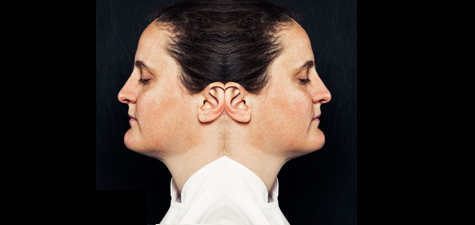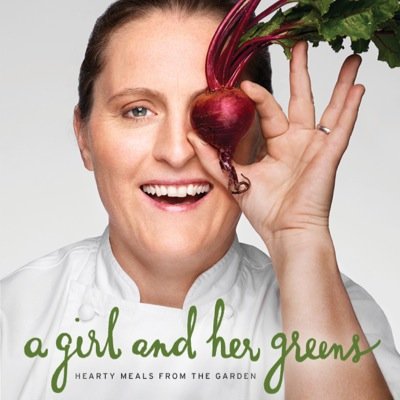
Some cookbooks remind you of others in a good way. Maybe it’s the design, maybe it’s the photography, or maybe it’s the straightforward approach coupled with the fact that good chefs have a lot to say. Take April Bloomfield‘s new cookbook, A Girl and Her Greens (Ecco 2015). If you read The New York Times review, you might be forgiven for thinking that this book was by Nigel Slater.
And, in many ways, Nigel Slater’s excellent book Tender: A Cook and His Vegetable Patch, shares much in design and approach to April Bloomfield’s book. They are both from the West Midlands – he was born in Wolverhampton in 1958, and she in Birmingham 15 years later. Their attitudes towards food are similar. Read the introduction of April’s book for insight into her grandmother’s cooking, the pleasure of a garden patch, and you will be reminded of Nigel’s writing. The wonder of perfect vegetables, treating them with respect and devotion, and in many respect, both books are not really vegetarian – but placing vegetables at the center of what we eat. They share a passion for simplicity at its best:
Often I find that the least exciting way of cooking actually leads to the most wonderful place. In fact, I like lots of vegetables – artichokes, Brussels sprouts, cauliflower – just boiled in salty water and served with a glug of olive oil and a sprinkle of chile or a tender squeeze of lemon. If you’ve got the perfect veg, there’s no need to manipulate it. (p. 10)
Of course, she does do more than boil, because, indeed, other methods and more complicated preparations do make even great vegetables taste better.
 A Girl and Her Greens, unlike Nigel’s book, which is organized around what his garden produces, skips around from soups to salads to potatoes and on to pickles. The first chapter called Put a Spring in Your Step will help you deal with the bounties of the early spring garden. Got ramps? Make the Ramps with Fried Eggs (pp. 28-9) with plenty of butter, pequin chiles and a touch of lemon. But be careful to read the headnotes. April writes that she likes to make bacon first and use the fat to cook the ramps and eggs – although the recipe uses butter and oil. Both sound good!
A Girl and Her Greens, unlike Nigel’s book, which is organized around what his garden produces, skips around from soups to salads to potatoes and on to pickles. The first chapter called Put a Spring in Your Step will help you deal with the bounties of the early spring garden. Got ramps? Make the Ramps with Fried Eggs (pp. 28-9) with plenty of butter, pequin chiles and a touch of lemon. But be careful to read the headnotes. April writes that she likes to make bacon first and use the fat to cook the ramps and eggs – although the recipe uses butter and oil. Both sound good!
Along with ramps, asparagus comes on the market like a deluge. There is Boiled Asparagus with Ramp Béarnaise Sauce (pp. 35-6). It’s one of her recipes that truly is about boiling a vegetable. Most of the instructions are for the sauce with a following recipe for Clarified Butter (p. 37). Take her advice and make clarified butter: “For one, it’s good fun to have an excuse to melt a big old hunk of butter, taking plenty of sniffs as it bubbles away. Clarified butter also makes a great cooking fat, since it won’t burn at high temperatures like regular butter will.” What else can you make with asparagus? Asparagus Quiches with Mint (pp. 44-6) with a lovely photo by David Loftus on the page of cooked and uncooked small quiches with slices of asparagus peeping out the tops.
At the back of the book is a wonderful recipe for Creamed Spinach (pp. 210-11). It will surprise you with the ingredient list: anchovies, white wine, garlic, lemon zest, and heavy cream. It’s the kind of preparation that enhances the lemony, rich taste of spinach, without being overwhelming. Two pages might seem a lot for a simple creamed spinach dish – but it is well worth following her advice.
Vegetables – especially for meat-eaters – deserve the best preparations. Read April Bloomfield and follow her lead in finding the best ways to highlight produce in any season.
